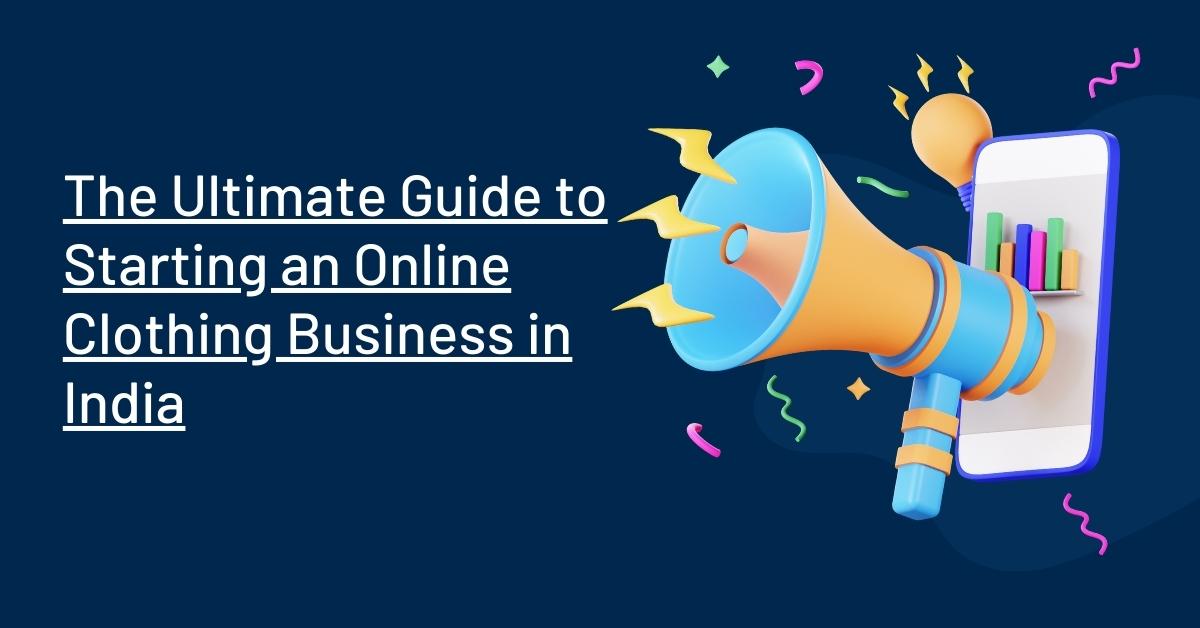The online clothing market in India has seen tremendous growth in recent years, driven by a growing middle class, increasing internet penetration, and the convenience of e-commerce. This offers a promising opportunity for aspiring entrepreneurs to enter the space and build a successful business. This article aims to provide a comprehensive guide to starting an online clothing business in India, covering everything from market research and branding to marketing and customer service. Wheter it includes suits, shirts, hoodies, saree or any other type of clothing or ethnic wear.
Market Research and Business Idea Validation
Conducting market research is essential for understanding the dynamics of the industry, identifying potential gaps, and assessing competition. This information will help you make informed decisions and tailor your offerings to your target audience.
- Use online surveys like SurveyMonkey
- Conduct interviews with potential customers
- Research competitors’ websites and social media channels
Identify your target audience and validate your business idea by analyzing market trends, consumer preferences, and assessing the demand for your products.
Creating a Unique Selling Proposition (USP) and Branding
A USP is a factor that sets your online clothing business apart from the competition. It could be anything from a unique design, exceptional quality, or sustainable practices. A strong USP is crucial for standing out in a crowded market. To create a strong brand identity, focus on designing a memorable logo, selecting a cohesive color scheme, and developing a brand voice that resonates with your target audience. Storytelling plays a vital role in establishing an emotional connection with customers, helping to build brand loyalty and generate word-of-mouth marketing.
Sourcing and Manufacturing
Local manufacturers offer the advantage of easier communication, lower shipping costs, and the potential for quicker turnaround times. Overseas suppliers might provide lower production costs, but may have longer lead times and increased shipping expenses.
- To effectively negotiate with suppliers, research market rates, be clear about your expectations, and establish long-term relationships.
- Managing inventory efficiently will help minimize costs and ensure product availability.
- Prioritizing sustainability and ethical practices in clothing production not only appeals to environmentally conscious consumers but also contributes to a positive brand image.
Setting Up Your Online Store
E-commerce platforms like Shopify, WooCommerce, and Magento offer varying features, pricing, and ease of use. Evaluate each option based on your specific needs and budget. Create a user-friendly website with attractive visuals, clear navigation, and compelling product descriptions to enhance the shopping experience. Optimize your website for search engines (SEO) to improve visibility, drive organic traffic, and increase sales.
Legal and Regulatory Requirements
Register your business as a sole proprietorship, partnership, or private limited company, and obtain necessary licenses and permits, such as a GST registration and import/export licenses. Familiarize yourself with taxes and regulations applicable to online clothing businesses in India, including customs duties and the Consumer Protection Act. Compliance with consumer protection laws and other regulations is crucial to avoid legal issues and maintain a strong reputation.
Payment and Shipping Solutions
Payment gateway options for Indian businesses include Razorpay, PayU, and CCAvenue, which facilitate secure transactions and integrate with various e-commerce platforms. Partner with reliable shipping companies, negotiate rates, and determine shipping policies that balance cost and customer satisfaction. A seamless and secure checkout experience can help build trust with customers and reduce cart abandonment.
Marketing and Promotions
Social media platforms like Instagram, Facebook, and Pinterest are powerful tools for promoting your online clothing business, engaging with customers, and showcasing your products.
- Email marketing, content marketing, and influencer collaborations can help increase brand awareness, drive traffic, and generate sales.
- Utilize platforms like Mailchimp for email marketing
- Create engaging blog content and collaborate with fashion influencers
- Paid advertising through Google Ads and Facebook Ads can help reach a wider audience, targeting specific demographics and interests to drive conversions and increase ROI.
Customer Service and Retention
Exceptional customer service is crucial in the online clothing industry, as it fosters trust, encourages repeat purchases, and generates positive reviews. Offer tips for handling returns, exchanges, and refunds in a hassle-free manner, ensuring that customers feel valued and satisfied. Implement strategies for building customer loyalty, such as offering loyalty programs, personalized discounts, and regular communication to keep customers engaged and coming back for more.
Conclusion
In summary, starting an online clothing business in India requires careful planning, research, and execution in various areas, such as market research, branding, sourcing, website development, legal compliance, marketing, and customer service. By following the guidelines outlined in this article, aspiring entrepreneurs can take the necessary steps to launch their online clothing business in India and achieve success in this thriving market.





